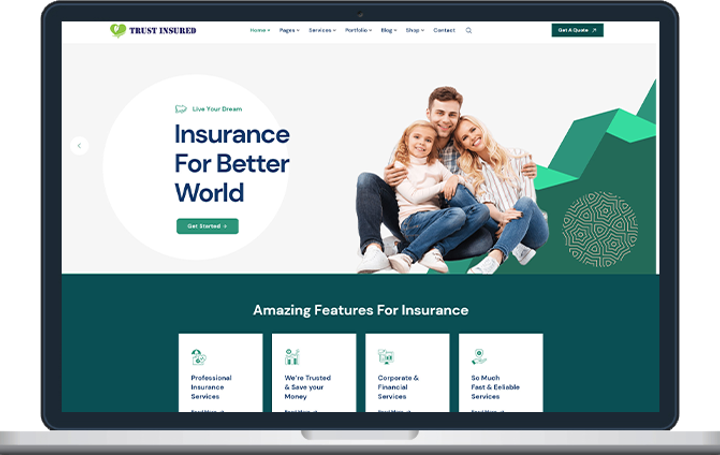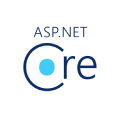
Introduction
Introducing our MultiVendor Insurance Portal, a comprehensive platform designed to simplify insurance management for companies and their employees. Our portal provides a seamless user experience and is equipped with a range of features that make it easy to manage insurance policies, access resources, and stay informed about changes to your insurance coverage.
The MultiVendor Insurance Portal has a user hierarchy that includes Admin, Benefit Firm, Client, Employee, and Dependents. This hierarchy ensures that the platform can be used by various stakeholders to streamline their insurance management processes. Clients, Benefit Firms, and Admin users can access the portal using the Umbraco back-office, while employees and dependents can use the Employee Portal (Front-end) to view their insurance plans, news and resources, medical cards, prescriptions, doctors, pharmacy, and other relevant information.
Their Challenges and Solution & Our Result with Power-Packed !
Challenge
Result

QuickBooks Integration
Challenge
Integrating QuickBooks with Umbraco was challenging due to the need for a customized and error-free manual flow. Maintenance and updates are required over time to ensure the integration continues to meet the business's needs.
Result
To optimize the integration of QuickBooks with Umbraco, it is important to work with experienced developers who have a deep understanding of both systems and the business's requirements.
Customization and thorough testing can ensure seamless and error-free integration and ongoing maintenance can help keep the integration up-to-date and functioning effectively.

Vendor-based Website domain
Challenge
One of the main challenges of managing multiple vendor-based websites from a single back-end is the risk of creating a one-size-fits-all approach that fails to meet the unique needs of each site's audience. It can be challenging to strike a balance between customization and scalability while maintaining a user-friendly interface.
Result
To overcome the challenges of managing multiple vendor-based websites from a single back-end, it is important to work with experienced developers who can create a flexible and customizable platform.
A modular approach can allow for individualized content, layout, and functionality, while a user-friendly interface can streamline the management process. Regular feedback and updates can help ensure the platform remains relevant and effective over time.

Two-Way Deployments
Challenge
Coordinating the two-way deployment process for multiple users deploying the same code on different server environments was challenging, as it required careful coordination and communication to ensure that all changes are synchronized and that the environment remains stable and functional. In addition, there were conflicts or inconsistencies that occurred from differences in the environments, which needed to be addressed and resolved before the code was deployed.
Result
To address this challenge, a robust version control system, automated testing, and deployment tools were implemented.
Collaboration and communication among the users and the development team are also essential to ensure that changes were coordinated and conflicts were resolved promptly.

Prior Requirement Clarity
Challenge
The lack of clarity on the requirements from the client's end resulted in confusion and delays during the project development phase. The team had to engage in multiple communication sessions with the client to obtain the necessary information to move forward with the project.
Result
To address the challenge of the poorly designed base architecture, the development team conducted a thorough analysis of the existing design, identified the issues, and developed a comprehensive plan for re-designing the architecture.
The team also ensured that the re-designed architecture aligned with the project's requirements and was scalable and maintainable in the long run.

Design Dependencies
Challenge
The design dependency on the client presented us with numerous challenges. We were counting on the client to share the necessary design files, which we needed to integrate and make functional. However, some of the files were incomplete and lacked essential components. As a result, we had to go through multiple iterations and do significant rework, which ultimately led to delayed deliveries.
Result
To mitigate the challenges associated with design dependency on the client, we established clear communication with the client, developed a detailed design brief, conducted regular check-ins, were proactive, and used collaboration tools.

Poor Architecture
Challenge
The poorly designed base architecture received at the start of the project created a challenge for the development team. The team had to spend significant time and effort re-designing the architecture to make it workable and align with the project's requirements. Despite the additional workload, the team was able to successfully complete the project.
Result
To address the challenge of the poorly designed base architecture, the development team conducted a thorough analysis of the existing design, identified the issues, and developed a comprehensive plan for re-designing the architecture.
The team also ensured that the re-designed architecture aligned with the project's requirements and was scalable and maintainable in the long run.

Custom Features in CMS
Challenge
During the project, there were certain requirements that necessitated custom development with Umbraco, but the permissions at hand were not always sufficient to meet these demands. The development team had to find workarounds and alternative solutions to implement these requirements within the framework of the permissions available.
Result
To address the challenge of limited permissions for custom development with Umbraco, the development team identified the specific requirements that needed custom development and found alternative solutions within the scope of the permissions available.
The team also communicated the limitations to the client and discussed feasible alternatives.

Third-Party Media Integration with Umbraco
Challenge
Integrating third-party media platforms like Slack, Teams, WhatsApp, SMS, etc. with Umbraco back office and creating a seamless flow for it to function properly, while ensuring custom communication was delivered as per the admin's requirements, presented a challenge for the development team during the project.
Result
To address the challenge of integrating third-party media platforms, the team utilized Twilio for sending SMS and WhatsApp messages.
Teams were integrated using webhooks, while Slack was integrated by generating Slack apps and binding them with Umbraco, ensuring a smooth flow of communication for the users as per the admin's requirements.
Results
And It was a smashing Success..!!
QuickBooks Integration
The optimized integration of QuickBooks with Umbraco has resulted in streamlined workflows, improved efficiency, and reduced manual labor.
It can also provide businesses with real-time access to critical financial data, enabling them to make informed decisions and better manage their resources.

Vendor-based Website Domain
The solution for managing multiple vendor-based websites from a single back-end has resulted in a streamlined and efficient platform that meets the unique needs of each site's audience.
Vendors can easily customize their websites, while the modular approach ensures scalability and flexibility.

Two-Way Deployment
The two-way deployment process for multiple users deploying the same code on different server environments was successfully coordinated by implementing a combination of version control, testing, and deployment tools along with effective collaboration and communication strategies.
Regular backups and disaster recovery planning helped to mitigate any potential risks or failures that may have occurred during the deployment process.

Prior Requirement Clarity
By implementing the solution, the development team was able to obtain the necessary information and clarify the unclear requirements with the client.
This helped the team to move forward with the project without delays or confusion.

Design Dependencies
By implementing the solutions, we were able to minimize the challenges associated with design dependency on the client.
Clear communication, a detailed design brief, regular check-ins, proactive measures, and collaboration tools helped us to avoid delays and complete the project successfully.

Poor Architecture
By implementing the solutions, the development team was able to re-design the architecture, address the issues, and ensure that it met the project's requirements.
The re-designed architecture was scalable and maintainable, which helped the team to complete the project successfully and meet the client's expectations.

Custom Features in CMS
By implementing the solutions, the development team was able to address the challenge of limited permissions for custom development with Umbraco.
The team found alternative solutions within the framework of the available permissions and effectively communicated the limitations to the client. This helped to ensure that the project was completed successfully and met the client's requirements.

Third-Party Media Integration with Umbraco
With the successful integration of Twilio, Teams, and Slack, the development team overcame the challenge of integrating third-party media platforms and creating a seamless communication flow in the Umbraco back office.
This enabled users to receive custom messages from the admin via their preferred media platform, leading to a more efficient and personalized communication experience.

Backend
ASP.NET Core
CMS
Umbraco
Database
SQL Server












